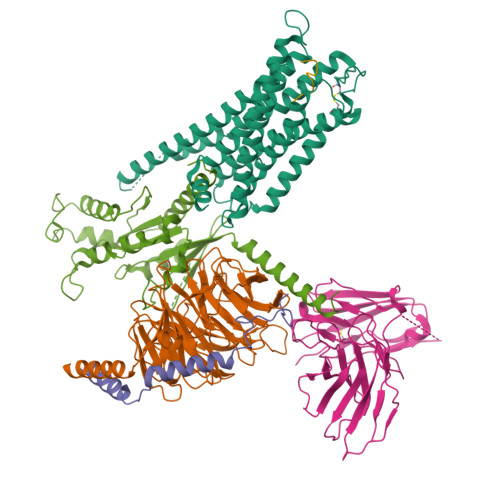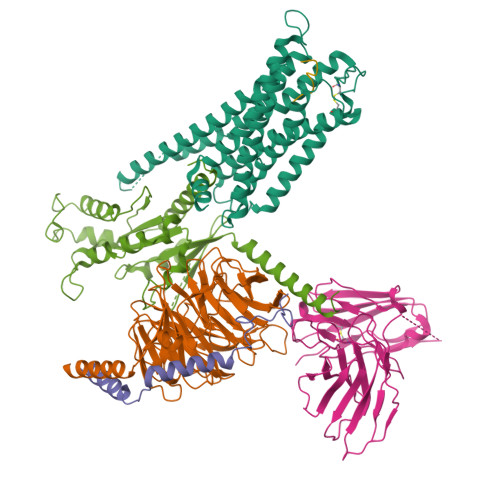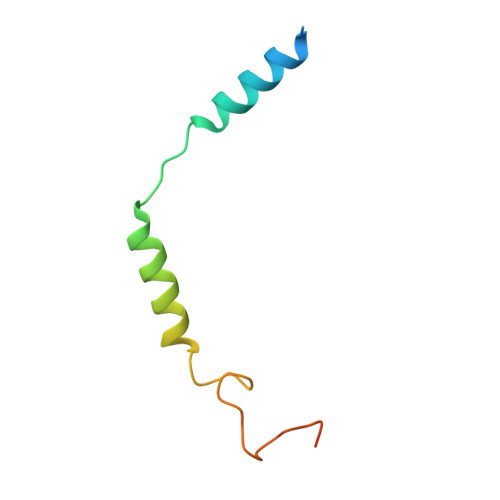Structural basis for the ligand recognition and G protein subtype selectivity of kisspeptin receptor.
Wu, Z., Chen, G., Qiu, C., Yan, X., Xu, L., Jiang, S., Xu, J., Han, R., Shi, T., Liu, Y., Gao, W., Wang, Q., Li, J., Ye, F., Pan, X., Zhang, Z., Ning, P., Zhang, B., Chen, J., Du, Y.(2024) Sci Adv 10: eadn7771-eadn7771
- PubMed: 39151001
- DOI: https://doi.org/10.1126/sciadv.adn7771
- Primary Citation of Related Structures:
8XGO, 8XGS, 8XGU - PubMed Abstract:
Kisspeptin receptor (KISS1R), belonging to the class A peptide-GPCR family, plays a key role in the regulation of reproductive physiology after stimulation by kisspeptin and is regarded as an attractive drug target for reproductive diseases. Here, we demonstrated that KISS1R can couple to the G i/o pathway besides the well-known G q/11 pathway. We further resolved the cryo-electron microscopy (cryo-EM) structure of KISS1R-G q and KISS1R-G i complexes bound to the synthetic agonist TAK448 and structure of KISS1R-G q complex bound to the endogenous agonist KP54. The high-resolution structures provided clear insights into mechanism of KISS1R recognition by its ligand and can facilitate the design of targeted drugs with high affinity to improve treatment effects. Moreover, the structural and functional analyses indicated that conformational differences in the extracellular loops (ECLs), intracellular loops (ICLs) of the receptor, and the "wavy hook" of the Gα subunit may account for the specificity of G protein coupling for KISS1R signaling.
Organizational Affiliation:
Kobilka Institute of Innovative Drug Discovery, Shenzhen Key Laboratory of Steroid Drug Discovery and Development, School of Medicine, The Chinese University of Hong Kong, 518172 Shenzhen, Guangdong, China.























